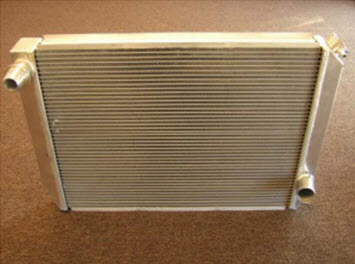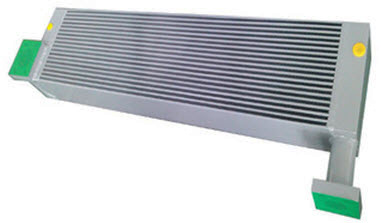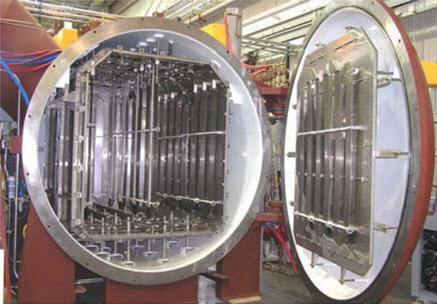Vacuum Aluminum Brazing
Abstract
Vacuum aluminum brazing has emerged as an increasingly popular joining method for aluminum and its alloys, offering unique advantages over traditional welding techniques. This process exploits the differential thermal expansion between aluminum and aluminum oxide to create mechanical detachment of oxide layers, enabling effective brazing without flux. The technique requires high vacuum conditions (10⁻⁴ mbar or better) and getter materials to eliminate oxygen contamination. Vacuum aluminum brazing provides superior joint quality, minimal distortion, and clean finishes without post-processing requirements. Applications include heat exchangers, condensers, and evaporators across automotive, aerospace, nuclear, and energy industries. Both batch and semi-continuous furnace systems are available to accommodate various production requirements and manufacturing scales.
Introduction to Vacuum Aluminum Brazing
Brazing has evolved into an increasingly important technique for joining materials, working alongside welding to meet modern manufacturing demands. Many aluminum products, including complex aluminum alloys, can only be economically manufactured using specialized brazing techniques. Vacuum aluminum brazing represents a sophisticated approach that addresses the unique challenges associated with aluminum oxide formation during the joining process.
The fundamental challenge in aluminum brazing lies in the aluminum oxide layer that naturally forms on aluminum surfaces. Unlike conventional brazing methods that rely on chemical fluxes to remove oxides, vacuum aluminum brazing employs a mechanical approach based on thermal expansion differences. This innovative technique has opened new possibilities for joining aluminum components in applications where traditional methods prove inadequate.
Understanding the Vacuum Aluminum Brazing Process
The unique mechanism of vacuum aluminum brazing centers on the relationship between aluminum and its oxide layer. The coefficient of expansion of aluminum is approximately three times greater than that of aluminum oxide. During the heating phase of the brazing cycle, this differential expansion causes the oxide layers to crack, creating pathways for the liquid brazing alloy to reach the bare base material beneath.
This mechanical detachment of the aluminum oxide layer represents a fundamental departure from chemical flux-based approaches. However, the process requires extremely controlled conditions to prevent re-oxidation of the aluminum in the newly formed cracks. The atmosphere must be completely devoid of oxygen, necessitating not only high vacuum levels of 10⁻⁴ mbar or better, but also the use of getter materials to capture residual oxygen atoms from the atmosphere surrounding the components being brazed.

Figure 1: Typical vacuum aluminum brazing cycle, illustrating the temperature and time relationships throughout the process
The vacuum aluminum brazing process typically involves relatively short cycles due to the rapid pumping and heating characteristics of specialized furnaces. The excellent temperature uniformity achieved at soak temperatures, combined with the high thermal conductivity of aluminum components, contributes to efficient processing times and consistent results.
Key Advantages of Vacuum Aluminum Brazing
Vacuum aluminum brazing offers significant advantages when compared to other metal joining processes. Since brazing does not melt the base metal of the joint, it enables more precise control of tolerances and produces clean joints requiring no additional finishing operations. The meniscus formed by the filler metal in the brazed joint creates an ideal shape for reducing stress concentrations and improving fatigue properties.
The process proves particularly valuable in several specific applications. Joining parts with very thin or thick cross sections becomes feasible through the uniform heating characteristics of vacuum brazing. Compact components containing multiple junctions requiring sealing, such as heat exchangers, benefit from the ability to create numerous simultaneous joints. Deep joints with restricted access can be effectively brazed using this technique.
The capability to join dissimilar metals, such as copper and stainless steel, expands design possibilities significantly. Assemblies requiring large numbers of joints particularly benefit from vacuum aluminum brazing because it minimizes distortion through uniform heating and cooling, unlike localized joining processes.
For oxidation-sensitive materials, vacuum aluminum brazing provides an ideal solution. The flux-free nature of the process eliminates corrosive flux residue, while post-brazed parts emerge clean with an attractive matte grey finish. The process generates minimal pollution and requires no post-braze cleaning operations.
Industrial Applications and Examples
Vacuum aluminum brazing finds extensive application across multiple industries, particularly in components requiring efficient heat transfer and reliable sealing. Heat exchangers, condensers, and evaporators represent the most common applications, serving automotive, aerospace, nuclear, and energy industries.

Figure 2: Vacuum aluminum brazed radiator, demonstrating the complex internal structure achievable through this process

Figure 3: Aluminum 3003 vacuum brazing fin plate radiators, illustrating the high-density fin applications possible with this technique
These applications demonstrate the process's capability to handle complex geometries and create multiple simultaneous joints while maintaining structural integrity and thermal performance requirements.
Vacuum Aluminum Brazing Furnace Systems
Vacuum aluminum brazing furnaces are available in two primary configurations: single-chamber batch-type systems and multiple-chamber semi-continuous systems. Each type offers distinct advantages depending on production requirements and operational constraints.
Batch-type furnaces typically feature horizontal loading, though vertical loading designs are available for specific applications. These systems offer simplicity in design with single loading and unloading doors, making them less expensive to purchase and easier to maintain than their semi-continuous counterparts.
Semi-continuous furnaces incorporate horizontal loading with automated systems using load carriers and external conveyor systems. The multi-chamber design enables higher production rates and improved efficiency by eliminating the need to cool heating zones or heat cooling zones during operation.

Figure 4: Batch vacuum aluminum brazing furnace, illustrating the equipment configuration and scale typical of these systems
Process Benefits and Capabilities
The vacuum aluminum brazing process excels in liquid flow through applications, particularly for high-density fin and heat exchanger designs. The technique accommodates lanced offset fin stock and other high surface area cooling approaches effectively. Components processed through vacuum aluminum brazing demonstrate higher pressure and hermetic seal capability, even in thin-wall designs.
The process integrates well with various welding processes or structural bonding techniques, providing enhanced design flexibility. The fluxless nature of the process eliminates potential corrosion issues that can compromise long-term performance in critical applications.
Production efficiency benefits from high batch rates achievable in properly configured oven systems, with specific capabilities varying according to component size and furnace configuration. The combination of process reliability, joint quality, and production efficiency makes vacuum aluminum brazing an attractive option for manufacturers seeking to optimize their joining operations.
Conclusion
Vacuum aluminum brazing represents a sophisticated solution to the challenges of joining aluminum and its alloys in demanding applications. The process leverages fundamental materials science principles to achieve reliable, high-quality joints without the complications associated with chemical flux systems. As manufacturing requirements continue to evolve toward more complex geometries and higher performance standards, vacuum aluminum brazing provides manufacturers with a proven technique capable of meeting these challenges while maintaining economic viability.
立即获取铝合金的精确性能!
Total Materia Horizon 包含 30,000+ 种铝合金的性能数据:化学成分、机械、物理和电学性能、非线性性能等。

申请 Total Materia Horizon免费试用帐户,加入来自全球 120 多个国家超过 500,000 名用户的大家庭。